Can You Measure Fun?
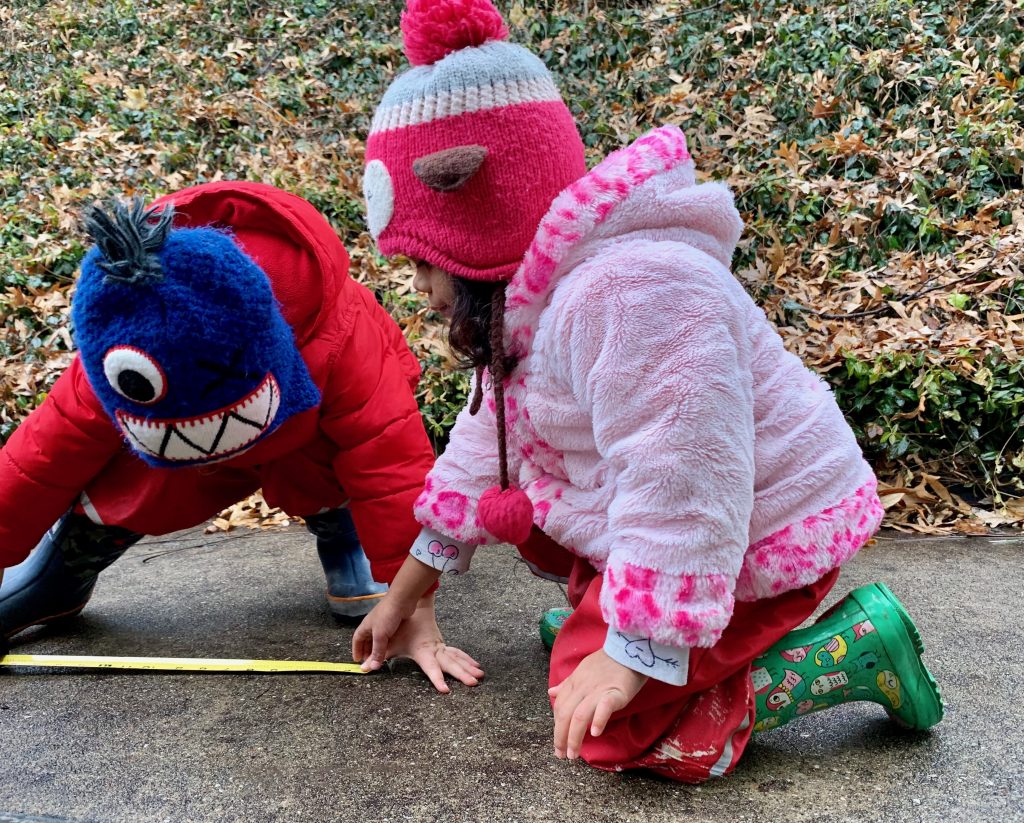
“Saaliha, can you hold this side down for me? I am trying to measure the sidewalk! I have the longest tape measure!”
We brought out the tape measures this week. There is nothing like a tool in the hands of young friends to get the juices flowing and the neurons firing.
When children are engaged in the process of measuring, they are developing foundational skills in early science, technology, engineering and math. It doesn’t matter if the children understand the concept of inches or feet or if they recognize numbers. It doesn’t even matter if the numbers on the measuring tape are facing up or down!
Children love scientific investigations that involve the use of real tools. We have many different types of tape measures, but these small ones are a favorite. They are easy for children to use because they fit in the palms of their hands. The tape can be pulled out without snapping back and hurting little hands. The children can push a button on the side and the tape will retract slowly. These little wonders are small enough to fit in a pocket and light enough to throw in a backpack to use during a hike!
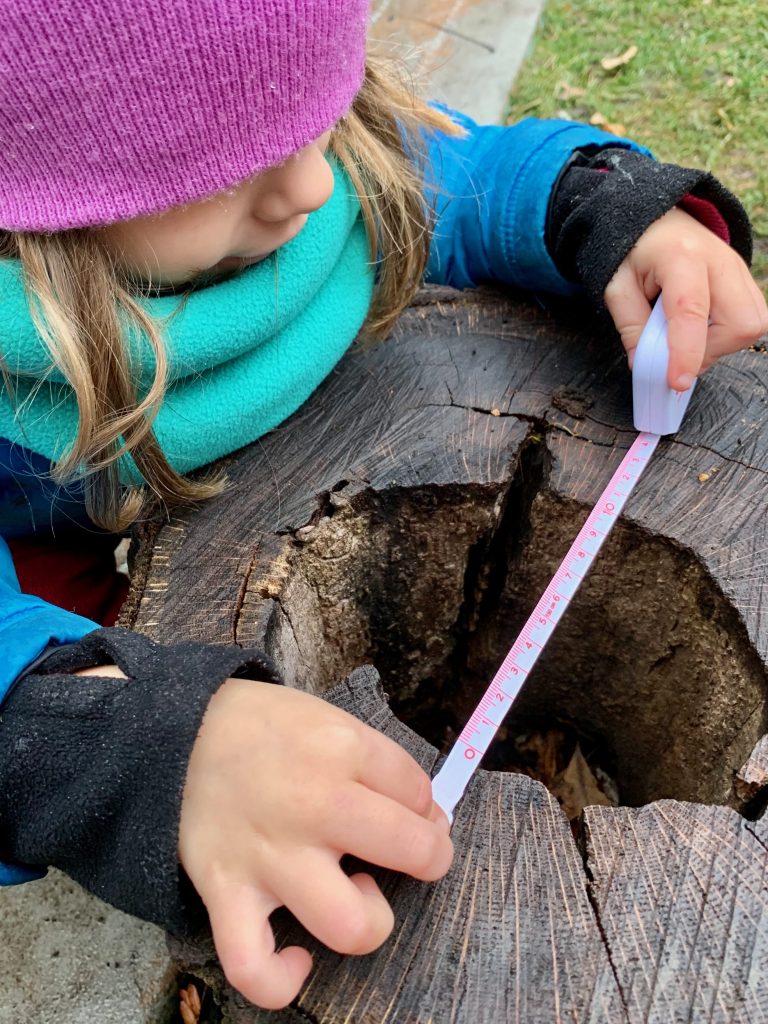
As the children measure every object in sight, I find opportunities to deepen their learning and introduce new vocabulary. I often refer to this as “throwing seeds in the wind.” Some seeds may land and some may sprout. Some may fly in one ear and out the other. I throw the seeds of learning out anyway. Then I observe the children. When they are ready to absorb more information, I throw out more seeds!
We talk about the word “inch.”
We count the numbers on the measuring tape.
Vocabulary words are flying through the air as the children investigate and learn through play. I hear words such as longer, shorter, taller, smaller, bigger and wider.
I see cooperation and experimentation between friends. By using language for measurement and looking for everyday ways to talk about measurement, you can help support the children’s scientific and mathematical understanding.
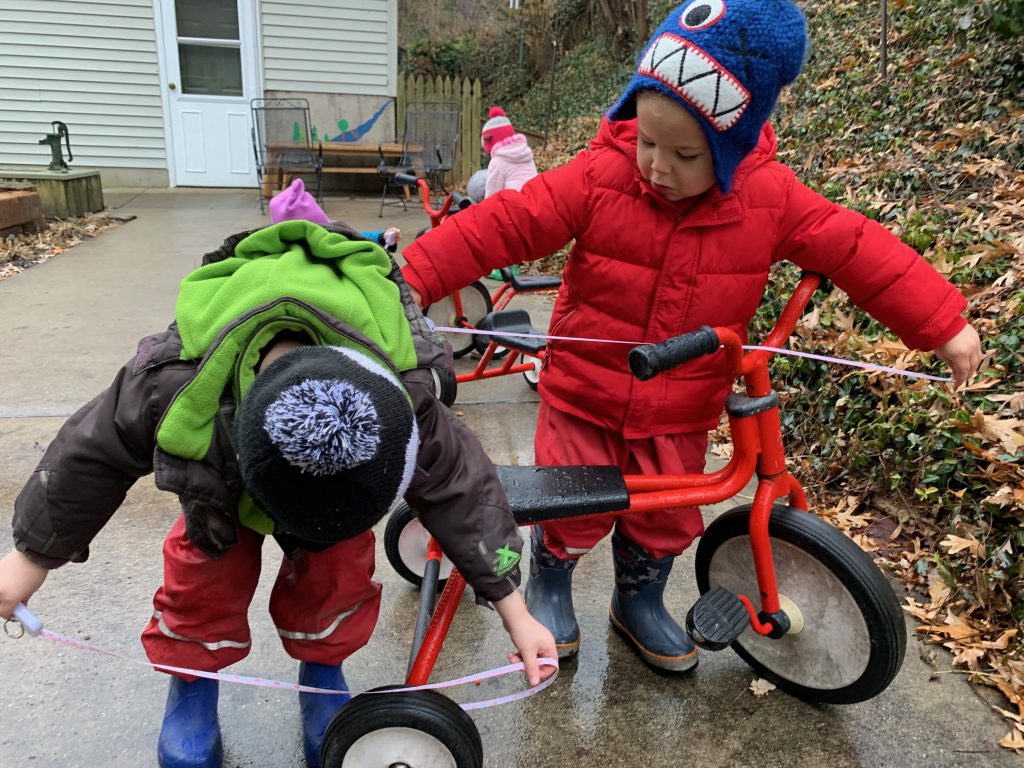
These are the foundations of STEM! For those of you who are struggling to meet standards, these are the common core standards for measurement and data.
Don’t forget to document this activity with your camera. As you photograph the activity, take a moment to see who is cooperating with a new friend or notice if a child is showing a left-handed preference that you hadn’t noticed in the classroom.
Use these photos to document the learning that takes place between early fall and late spring. Sometimes the learning is so gradual from day to day or week to week that we don’t see the giant leaps that the children have made until we compare photos taken over the course of the school year.
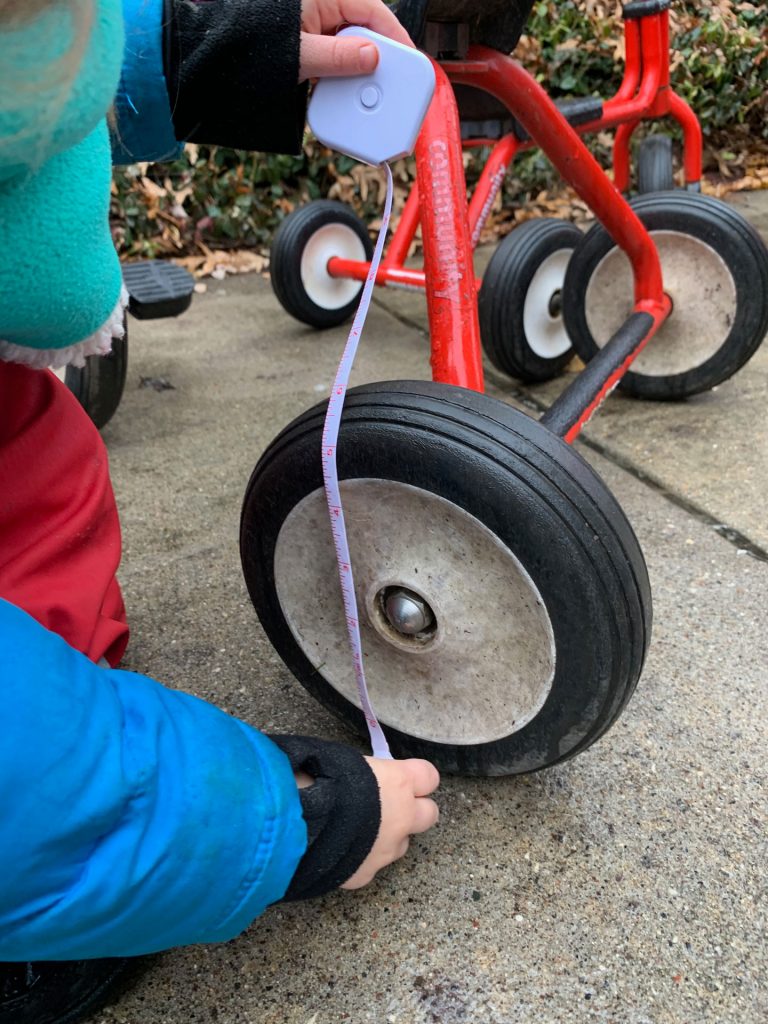
“How many numbers are on your bike tire?” Michella asks. “Are you measuring the big tire in the front or the little one in back?”
The children compare methods, share ideas and evaluate and modify their predictions.
Young children tend to focus on only one attribute. As they discover that an object can be measured in different ways—using different attributes—another piece of the learning puzzle falls into place.
The children identify objects as different or the same or more or less on the basis of the attributes that they can measure.
By supporting rich conversations about attributes while children are engaged in hands-on activities, you can help them mathematicize their thinking and expand their measurement vocabulary.
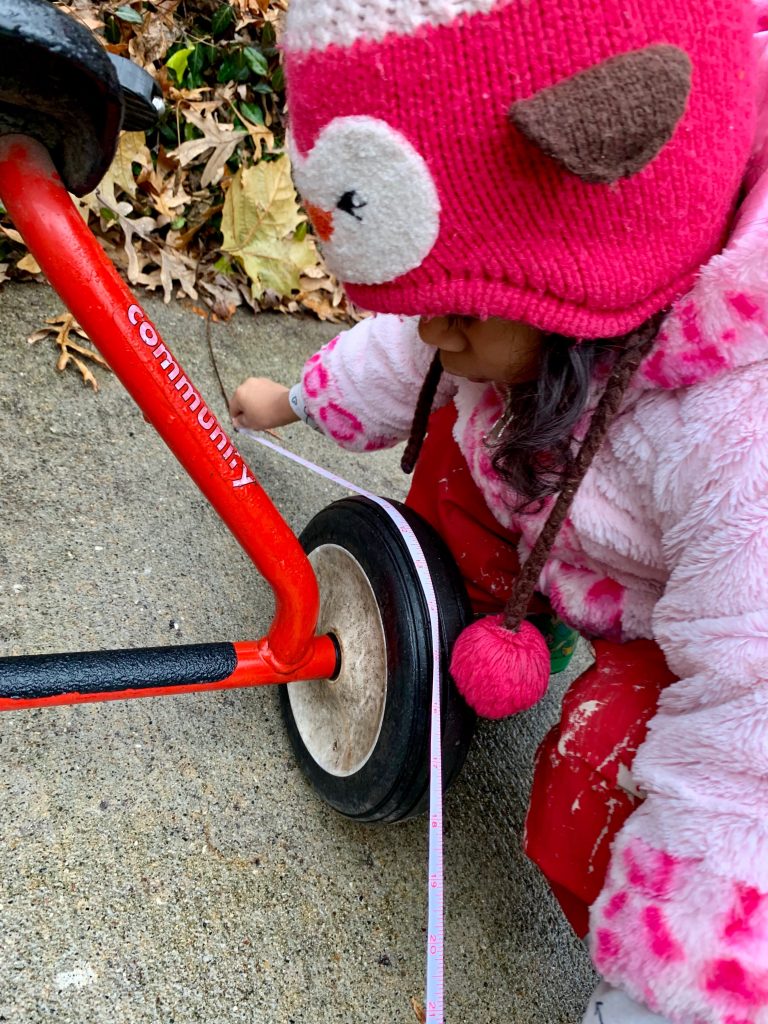
A child’s engagement and inventiveness when investigating measurement is what makes learning science and math so fun!
Measurement is one of the earliest STEM concepts that children learn. Comparing the sizes of objects, determining which plant is the biggest, seeing which child is the tallest and observing that a kite is high up in the sky or a bird is so far away that we can barely see it are all examples of how young learners can begin to understand the concept of measurement.
As you build on this understanding, you help foster the rudimentary logic, reasoning, comprehension and critical-thinking skills that set children on the path to academic success.
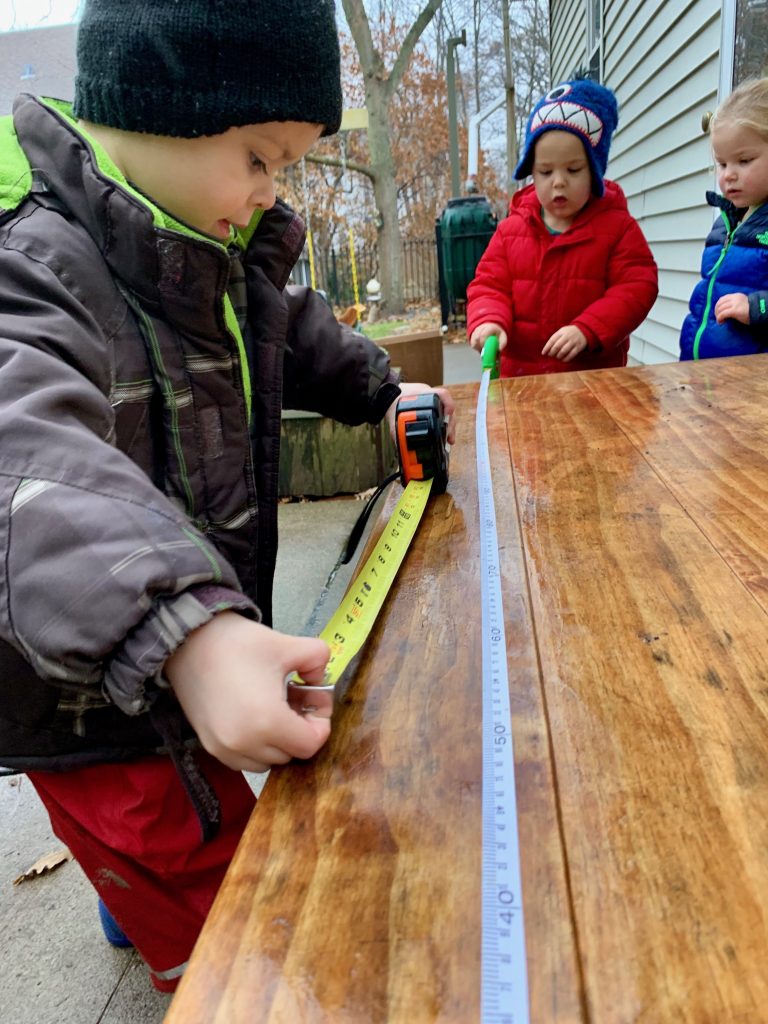
When children are given opportunities to explore measurement concepts through playful, hands-on investigations, you will observe them making predictions as they build their problem-solving skills.
You will find that your students naturally love learning about measurement through real-world experiences. So bring out the tape measures and let the STEM learning begin!
Is there a brand of tape measures that you find work best with young children?
Hi Carol,
We use small, 60-inch tape measures that I found at a conference. I found these these on Amazon to give you an idea of the type we use here. They are perfect for little hands and pockets, are lightweight and retract gently!
Great idea to implement
Have the kids see how long everything is outside in the park they will have fun.
You can sometimes find these type of small measuring tapes at Hobby Lobby or Walmart in the sewing notions section. I am not sure of the price to know if they are less expensive there. You can also get paper measuring tapes at IKEA stores . I always ask the manager if I can have enough for my class. The only downfall is that since they are paper, they do rip.
We love to use measuring cups for measuring
very interesting
good and very interesting